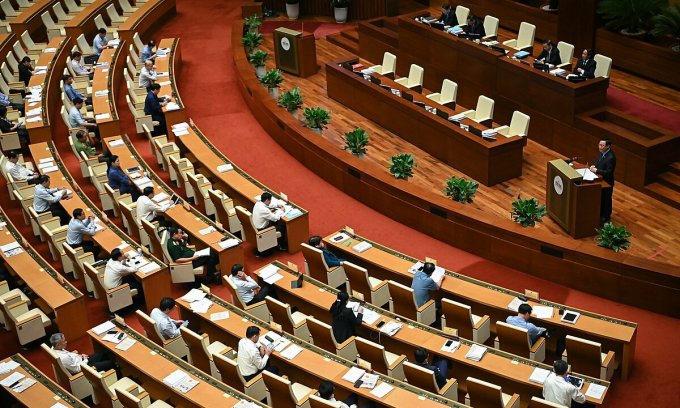How is the law on intellectual property on images in Vietnam regulated?

Hello Lawyer, Can you give me more information about how the Intellectual Property Law on images regulates? I would like to thank you very much for answering my questions.
Thank you for sending us your question. Images especially those that go into business today are among the most vulnerable. Many people are ready to take pictures of other people’s products created for a long time and attach them to their own products to sell for profit. This is not only a moral violation, but it is also a violation of the law. So how does the Intellectual Property Law on images regulate?
To be able to provide you with information on how does the Intellectual Property Law on images regulate? LuatsuX invites you to refer to our article below.
Legal grounds
- Law on Intellectual Property 2005, amended and supplemented in 2009, 2019
- Decree 105/2006/ND-CP
- Decree 131/2013/ND-CP
- Circular 11/2015/TT-BKHCN
State policy on intellectual property in Vietnam
The provisions of Article 8 of the Law on Intellectual Property of 2005, amended and supplemented in 2009, 2019 stipulate the State’s policies on intellectual property in Vietnam as follows:
– Recognition and protection of intellectual property rights of organizations and individuals on the basis of ensuring harmony between the interests of the intellectual property right holder with the public interests; failing to protect intellectual property objects that are contrary to social ethics and public order, harmful to national defense and security.
– Encourage and promote creative activities and exploitation of intellectual property in order to contribute to socio-economic development and improve people’s material and spiritual life.
– Financial support for the transfer and exploitation of intellectual property rights for public benefit; encourage domestic and foreign organizations and individuals to sponsor creative activities and protect intellectual property rights. Prioritize investment in training and fostering a contingent of cadres, civil servants, public employees, and related subjects in the work of protecting intellectual property rights, and researching and applying science and technology in the field of intellectual property rights. protection of intellectual property rights.
– Mobilize the resources of the society to invest in improving the capacity of the intellectual property protection system to meet the requirements of socio-economic development and international economic integration.
State management responsibilities on intellectual property in Vietnam
The provisions of Article 11 of the Law on Intellectual Property in 2005, amended and supplemented in 2009, 2019 stipulate the responsibility for state management of intellectual property as follows:
– The Government performs the unified state management of the intellectual property.
– The Ministry of Science and Technology is answerable to the Government and shall assume the prime responsibility for, and coordinate with the Ministry of Culture, Sports and Tourism, and the Ministry of Agriculture and Rural Development in performing the state management of intellectual property and real estate. State management of industrial property rights.The Ministry of Culture, Sports and Tourism shall, within the ambit of its tasks and powers, perform the state management of copyright and related rights.
– The Ministry of Agriculture and Rural Development shall, within the ambit of its tasks and powers, perform the state management of rights to plant varieties.
– Ministries, ministerial-level agencies and agencies attached to the Government shall, within the ambit of their tasks and powers, coordinate with the Ministry of Science and Technology, the Ministry of Culture, Sports and Tourism, the Ministry of Agriculture and Rural Development; and the Ministry of Agriculture and Rural Development. Rural Development, People’s Committees of provinces; and centrally run cities in the state management of the intellectual property. People’s Committees at all levels perform the state management of intellectual property in their localities according to their competence.
– The Government shall specify the competence and responsibilities for state management of intellectual property of the Ministry of Science and Technology, the Ministry of Culture, Sports and Tourism, the Ministry of Agriculture and Rural Development, and the Committee. people at all levels.
Grounds for arising and establishing intellectual property rights in Vietnam
The provisions of Article 6 of the Law on Intellectual Property in 2005, amended and supplemented in 2009, and 2019 stipulate the bases for arising and establishing intellectual property rights in Vietnam as follows:
Copyright arises from the time a work is created and expressed in a certain material form, regardless of content, quality, form, medium, language, published or not. published, registered, or unregistered.
– Related rights arise from the time when encrypted performances, sound recordings, video recordings, broadcasts, and program-carrying satellite signals are fixed or performed without prejudice to copyright. Industrial property rights are established as follows:
Industrial property rights to inventions, industrial designs, layout designs; and trademarks shall be established on the basis of decisions on the grant of protection titles of competent state agencies according to the registration procedures prescribed by law. in this Law or recognize international registration under international treaties to which the Socialist Republic of Vietnam is a signatory.
- Industrial property rights to well-known marks are established on the basis of use, independent of registration procedures.
- Industrial property rights to geographical indications are established on the basis of decisions on the grant of protection titles of competent state agencies according to registration procedures prescribed in this Law or under international treaties to which they are registered. The Socialist Republic of Vietnam is a member;
Industrial property rights to trade names are established on the basis of lawful use of such trade names;
Industrial property rights to a business secret are established on the basis of lawfully obtaining a business secret and keeping it confidential;
The right to combat unfair competition is established on the basis of competitive business activities.
- Rights to plant varieties are established on the basis of decisions on the grant of plant variety protection certificates issued by competent state agencies according to registration procedures prescribed in the Intellectual Property Law.
What is the intellectual property law on images?
According to current Vietnamese law, there is currently no law named Law on Intellectual Property of Images; that all issues related to images will be protected by intellectual property rights through the 2005 Intellectual Property Law, amended and supplemented in 2009, 2019 in the form of copyright protection; and protection of industrial property rights.
Copyright is protected in the form of:
Visual and applied art works;
Photographic works;
Architectural works;
Maps, diagrams, maps, drawings related to topography, architecture, scientific works;
Industrial property rights are protected in the following forms: Trademarks and industrial designs.
Authors and copyright holders whose works are protected by copyright are specified as follows:
Organizations and individuals whose works are protected by copyright include the person who directly creates the work and the copyright owner specified in Articles 37 to 42 of the 2005 Intellectual Property Law. , amended and supplemented in 2009, 2019.
- Authors and copyright holders specified in Clause 1, Article 13 of the Law on Intellectual Property 2005, as amended in 2009, 2019 include Vietnamese organizations and individuals; a foreign organization or individual whose work is published for the first time in Vietnam but has not been published in any other country or is published simultaneously in Vietnam within thirty days from the date on which the work is published. that is published for the first time in another country; foreign organizations and individuals whose works are protected in Vietnam under international treaties on copyright to which the Socialist Republic of Vietnam is a contracting party.
Authors and rights of inventors of inventions and industrial designs are prescribed as follows:
- The author of an invention or industrial design is the person who directly creates the object of the industrial property; in case two or more persons jointly directly create an industrial property object, they shall be co-authors.
Acts of infringing intellectual property rights on images in Vietnam
Firstly, the acts of infringing upon images are protected by copyright:
Appropriating copyright to literary, artistic, and scientific works.
Impersonate the author.
Publish and distribute works without the author’s permission.
Publish and distribute work with a co-author without the permission of that co-author.
Correction, mutilation, or distortion of the work in any manner which is prejudicial to the honor and reputation of the author.
Copying a work without the permission of the author or copyright owner, except for the cases specified at Points a and dd, Clause 1, Article 25 of the 2005 Intellectual Property Law, as amended in 2009. 2019.
Making a derivative work without the permission of the author or the copyright owner to the work used to make the derivative work, except for the case specified at Point I, Clause 1, Article 25 of the Intellectual Property Law 2005, amending and supplementing 2009, 2019.
Using a work without the permission of the copyright owner, without paying royalties, remuneration; or other material benefits as prescribed by law, except for the case specified in Clause 1, Article 25 of this Law.
Lease the work without paying royalties, remuneration, and other material benefits to the author or copyright holder.
Duplicate, reproduce, distribute, display, or otherwise communicate a work to the public via communication networks and digital means without the permission of the copyright owner.
Publish the work without the permission of the copyright owner.
Intentionally rescinding or nullifying technical measures taken by a copyright owner to protect copyright in his or her work.
Deliberately deleting or changing rights management information in the electronic form contained in the work.
Manufacture, assemble, transform, distribute, import, export, sell, or lease equipment knowing or having grounds to know it nullifies the technical measures taken by the copyright owner to protect the copyright of their work.
Making and selling works where the author’s signature is forged.
Exporting, importing, and distributing copies of works without the permission of the copyright owner
Secondly, the acts of infringing upon the trademark-protected image:
Basis for assessing the possibility of confusion of a sign with the trademark being protected include:
Scope of protection in general, each component of the mark; the similarity of the sign with the mark in general and with the distinctive components of the mark, especially the component that makes a strong impression on consumers;
Relevance of goods and services in terms of functions, uses and composition; practices and customs of buying, selling, distributing, selecting and using goods and services; conditions, methods and locations for sale, distribution, marketing, promotion, purchase and sale of goods and services;
Characteristics and attention level of consumers when choosing, buying and selling goods and services;
Other criteria such as: practice of using and protecting similar marks for the same goods; the influence of other factors creating associations about the relationship between the goods and services under consideration and the protected goods and services;
Evidence of misleading consequences for consumers may be used to support an assessment of the likelihood of confusion of the use of the sign, but is not a requirement in drawing conclusions about the likelihood of confusion. confusion of the use of the sign.
Determination of infringing elements of trademark rights:
In case of using a sign identical to a mark for goods or services that are identical with those of goods or services identified in the Certificate of Trademark Registration or Certificate of Internationally Registered Mark, protected in Vietnam or the International Register of Trademarks of the World Intellectual Property Organization, there is no need to consider the possibility of confusing consumers about goods and services bearing the mark;
In case of using a sign identical to a mark for similar or related goods or services; use a character similar to a mark for goods or services that are identical or similar to or related to goods or services on the list of goods and services attached to the mark identified in the registration certificate. trademark or certificate of international registration of marks protected in Vietnam or the Official Gazette of International Registration of marks of the World Intellectual Property Organization, it is necessary to consider the possibility of confusing consumers. for goods and services bearing the mark.
Determining factors infringing rights to well-known trademarks:
In case of using a sign identical or similar to a well-known mark or a sign in the form of translations or transcriptions of a well-known mark for any goods or services, including goods or services that are not identical or incompatible. and is not related to goods and services on the list of goods and services bearing well-known marks, it is necessary to assess the possibility of confusion about the origin of goods or services or the relationship between users. use that sign with the owner of a well-known mark;
In case of using signs identical or similar to well-known trademarks as prescribed at Point a, Clause 3 of this Article is unlikely to cause confusion about the origin of goods or services but give a false impression to consumers. on the relationship between the user of that sign and the owner of the well-known mark, it is also considered an act of infringing upon industrial property rights;
When filing a request for the handling of infringement of a well-known mark, the right holder must provide evidence to prove that the mark is well-known in Vietnam according to the criteria specified in Article 75 of the Intellectual Property Law. intellectual property, regardless of whether the mark has been registered for protection in Vietnam or not;
Before deciding to proceed with the procedure for handling violations, the agency competent to handle violations shall based on the criteria specified in Article 75 of the Intellectual Property Law to consider and evaluate a trademark has obtained considered famous in Vietnam or not. Agencies competent to handle violations may exchange professional opinions with NOIP and consult an advisory council.
In case a well-known trademark in Vietnam is recognized according to civil procedures or under the recognition decision of the National Office of Intellectual Property, the infringement-handling agency may base on relevant documents to view consider the recognition of a mark that is considered well-known in Vietnam if the recognition of a well-known mark by the above-mentioned agencies at the time of requesting for handling violations is still appropriate.
Third, acts of infringing upon industrial design protected images:
The product/part of the product under consideration is considered to be a copy of a protected industrial design if the product/part of the product has a set of external design features (shape) containing all the features basic; and non-essential designs of protected industrial designs.
The product/part of the product under consideration is essentially considered to be a copy of a protected industrial design if the product/part of the product has a set of external design features containing all the Basic designs of industrial designs are protected, differing only in design features that are not easily recognizable and memorable.
Where the totality of the external styling features of a product/product part is considered to be a copy or in essence a copy of the set of external appearance features of at least one product in the set. products of a protected industrial design are also considered to infringe the rights to that industrial design.
The basic design feature of a protected industrial design is understood as a design feature that is easily recognizable and memorable and is used to distinguish the overall design of one industrial design from another. A set of basic styling features can be shapes, lines, correlations between shape and/or line features, and color features determined on the basis of a set of attached photos/drawings. under the Industrial Design Patent.
Services of Lawyer X
Prestigious professional services: Firstly, the team of consultants and consultants for many years in the field of civil status, and customer support.
On-time: Certainly, with the motto “Get your lawyer right at your fingertips”, we ensure the service always performs on time. The rights and interests of customers always come first.
Cost: Besides, Lawyer X’s service costs are highly competitive; depending on the nature of the particular case. So, we want our guests to have the best possible service experience. Therefore, costs which guaranteed to be the most suitable and economical for customers.
Confidentiality of client information: Finally, all personal information of client Lawyer X will be 100% confidential.
Please contact us immediately with questions about “How is the law on intellectual property on images in Vietnam regulated?”
Contact LSX Lawfirm
Finally, we hope this article is useful for you to answer the question: “How is the law on intellectual property on images in Vietnam regulated?”. If you need any further information, please contact LSX Law firm: at +84846175333 or Email: [email protected]
Related article:
- Divorce property division involving foreign elements
- Property division upon divorce: What should be noted in Vietnam?
Frequently asked questions:
According to the provisions of Clause 13, Article 4 of the Intellectual Property Law 2005, as amended in 2009, and 2019, an industrial design is the external appearance of a product expressed in shapes, lines, colors, or shapes. combination of these factors. That is, the image here will be protected in the form of virtual exclusive protection of the content of creative ideas.
Applied art is a work represented by lines, colors, shapes, and layouts with useful features, which can be attached to a user object. Produced manually or industrially such as Graphic design (expression of logos, identity systems and product packaging), fashion design, product styling, interior design, pages mind. Here only the form of the work is protected, not the idea.
Conclusion: So the above is How is the law on intellectual property on images in Vietnam regulated?. Hopefully with this article can help you in life, please always follow and read our good articles on the website: lsxlawfirm.com




